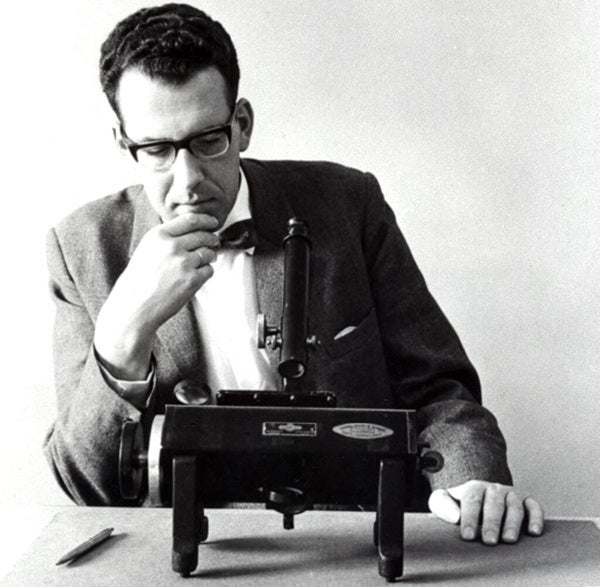The world of astronomy mourned the recent passing of Dutch-American astronomer Maarten Schmidt, the first person to measure the distance to a quasar. His groundbreaking work in the 1960’s greatly expanded the size of the known universe, providing one of the first clues that the Big Bang theory was correct. Schmidt died on Sept. 17 at his home in Fresno, California. He was 92 years old.
The story of quasars began several years before Schmidt focused his attention on them. Starting in the 1950s, astronomers identified several sources of radio emissions in the sky. Many of those radio sources could be assigned to known objects, like bright stars or nearby galaxies. But some remained frustratingly elusive, having no visible counterpart. Whatever these strange radio sources were, they appeared as point-like objects, indicating that they were either huge in size but incredibly far away or small and nearby.
Astronomers, never slow to assign a name to a new category of celestial phenomenon, quickly designated these radio sources “quasi-stellar objects,” which was shortened to quasars.
Unraveling the mysteries of quasars
Schmidt, who received his Doctor of Philosophy from Leiden University in 1956 under the tutelage of Dutch astronomer Jan Oort (of Oort Cloud fame), eventually moved to the California Institute of Technology to continue his studies into the properties and evolution of galaxies. Among Schmidt’s many accomplishments during his tenure there, he was the first to discover that the density of interstellar gas within galaxies was proportional to their rate of star formation, a relationship now known as the Schmidt law (or, more recently, the Kennicutt-Schmidt law).
Schmidt then turned his attention to finding the light spectra of radio sources, especially these mysterious quasars. By the early 1960s, astronomers had been able to identify optical light counterparts to one other quasar, but its spectrum remained poorly understood — its light output did not match any other known type of astronomical object.
In 1963, Schmidt used the 200-inch Hale telescope at Palomar Observatory to discover the optical counterpart of the quasar known as 3C 273, one of the first to be discovered. He also gathered the spectrum of this poorly understood object, and that spectrum featured strange emission lines that, once again, defied explanation.
After several weeks of deep contemplation and much nervous pacing around his home, Schmidt realized what he was looking at: a perfectly normal galaxy. All the emission lines from all the usual elements were there, like hydrogen and helium, but they were simply shifted far down toward the red end of the spectrum.
The light spectrum of an astronomical object can shift from two things. One is the Doppler effect: If an object is moving away from us, the wavelength of its emitted light will lengthen, and its emission lines will be redshifted. But the position of the emission lines from 3C 273 implied a recession velocity of around 100 million mph, some 15 percent the speed of light!
This redshift result was orders of magnitude larger than that found for any other known object.
Quasars: The luminous cores of distant galaxies
Schmidt argued for another interpretation in his Nature paper describing his discovery: the Big Bang. Distant objects are pulled away from us due to the expansion of space itself, which also causes a redshift. It was this realization that allowed Edwin Hubble to lay the observational groundwork for the Big Bang theory in the 1920s. But besides Hubble’s insight, there was little more to anchor the Bang Bang in observations. And so astronomers continued to debate its validity.
Schmidt’s work showed that 3C 273 was billions of light-years away, making it the most distant astronomical object known at the time. This discovery of the first distance to a quasar dramatically rewrote our understanding of the true scale of the cosmos.
For quasars to be detectable at such vast distances, they must be insanely luminous. In fact, they must be the most luminous objects in the universe. Schmidt believed that when we observe a quasar, we are seeing the light emitted as gas violently swirls and grinds together around a gigantic black hole in a newly forming galaxy, which turned out to be the correct interpretation.
The existence of quasars provided proponents of the Big Bang theory a major observational win. Quasars only appear in the distant universe; there are no nearby objects like them.
In the Big Bang model, the universe changes and evolves as it continues to cool and expand. And because quasars are only found far, far away, they must have only existed in the early universe, not our modern-day one.
In 1966, Time magazine put Schmidt on their cover, likening his discovery of the true nature of quasars to those of Galileo’s in its power to reshape our understanding of the universe. And an accomplishment like that is sure to live on.










